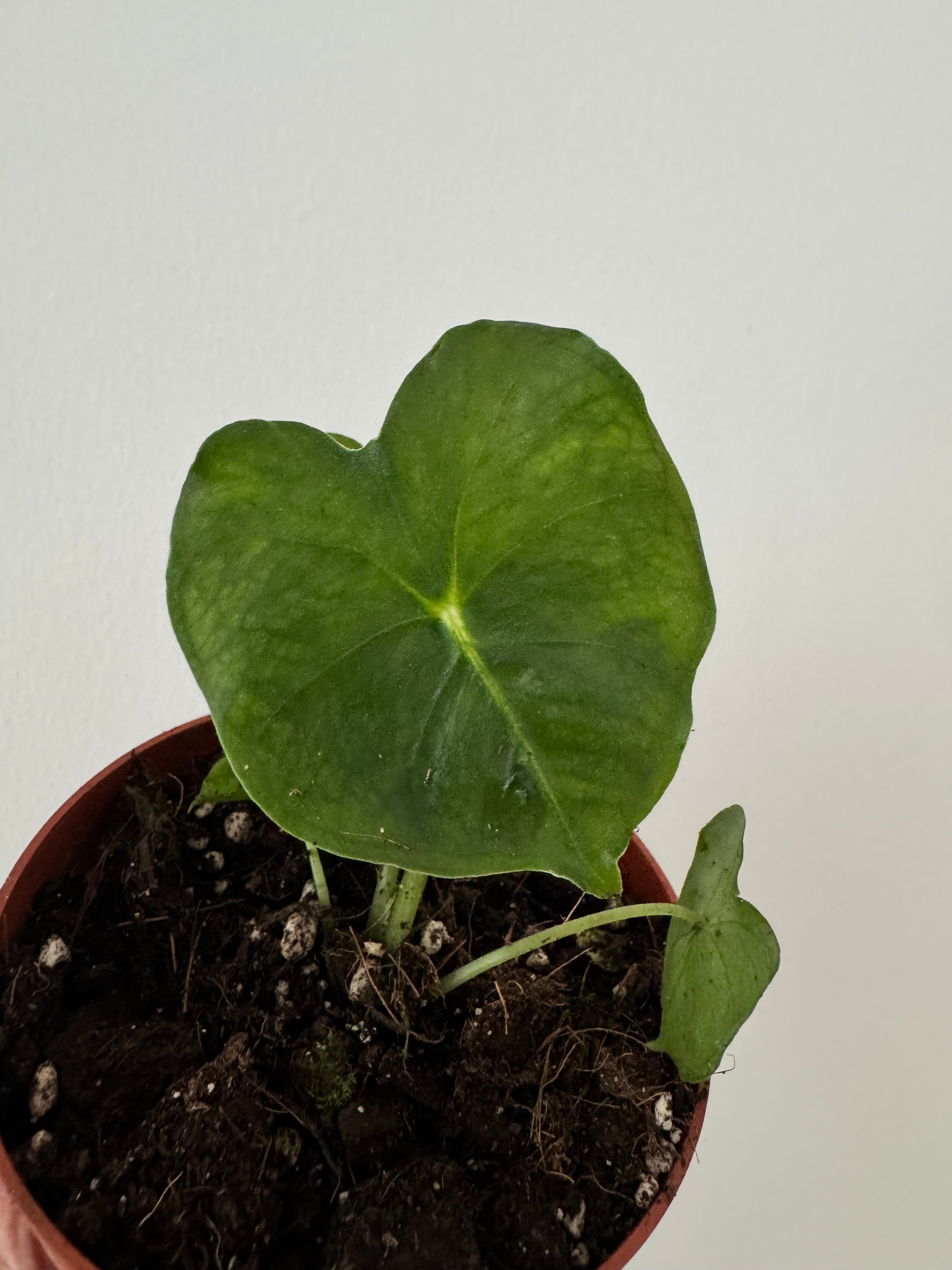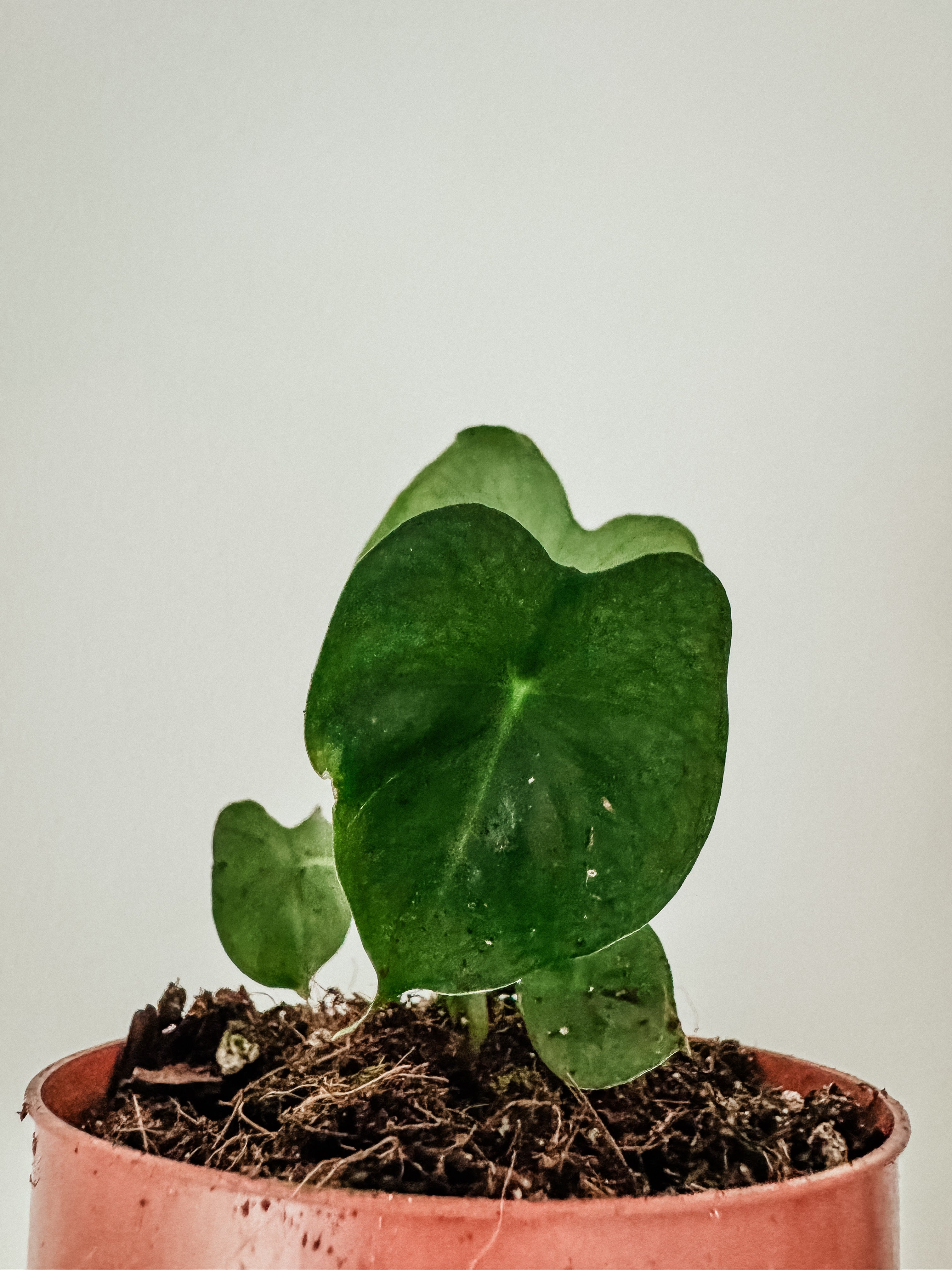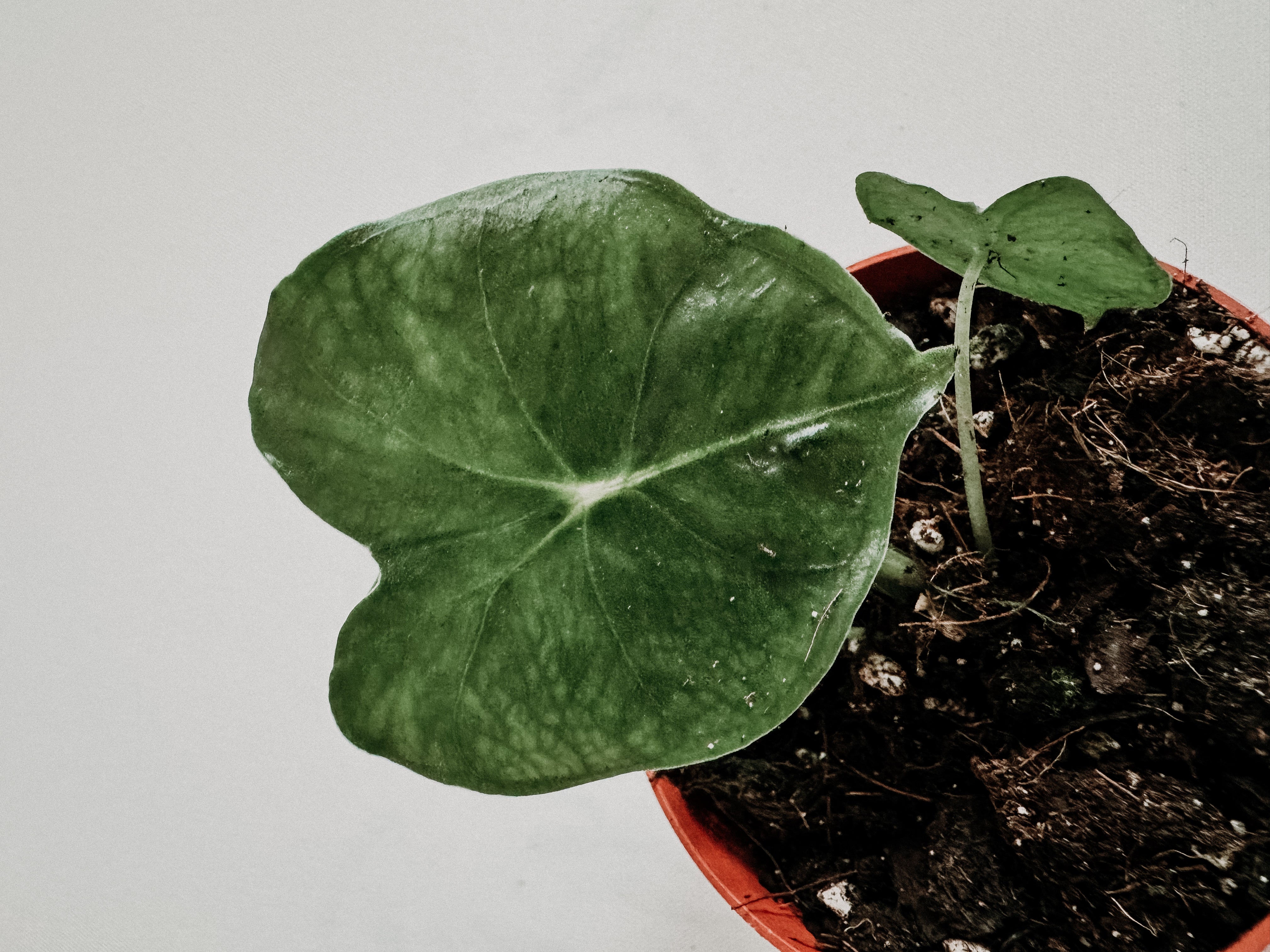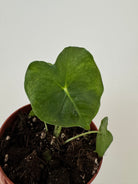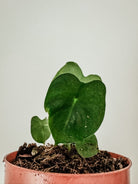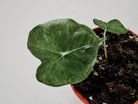Alocasia Meclizine
Couldn't load pickup availability
The Alocasia Meclizine is a rare heartshaped plant.
🌤 Light
-
Bright, indirect light is ideal. Avoid direct midday sun, which can scorch leaves.
-
Some morning or late afternoon gentle sun may be tolerated if diffused (e.g. through a thin curtain).
-
If light is too low, the plant may become leggy, lose vigor, or show pale new growth.
🌡 Temperature
-
Keep in a warm range, ideally ~ 20 °C to 28 °C (68 °F to 82 °F).
-
Protect from cold drafts (air conditioners or open windows) and sudden temperature swings.
💧 Watering
-
Water when the top few centimeters of soil are dry (i.e. don’t let it completely dry out, but avoid constant wetness).
-
Water thoroughly so that excess drains out the bottom; ensure pot has good drainage.
-
Discard any water sitting in the saucer or tray to avoid soggy roots.
-
In cooler or lower-light periods, reduce watering frequency.
🌫 Humidity
-
Prefers high humidity, ideally 60-85%.
-
Use a humidifier or place the pot on a tray with pebbles and water (so the pot sits above the water line).
-
Grouping with other plants also helps raise ambient humidity.
-
Avoid misting leaves excessively (it can lead to fungal spots if water stays on the foliage too long).
🪴 Soil / Potting Mix
-
Use a well-draining, airy, chunky aroid mix.
Suggested components:
• Orchid bark or chunky bark
• Perlite or pumice
• Coco coir / peat moss (for moisture retention)
• Some charcoal or coarse bits -
Avoid dense, compact soils, which can hold too much moisture and suffocate roots.
🧪 Fertilizer
-
Feed during the growth season (spring through summer) with a balanced, diluted fertilizer (½ strength is often safer for sensitive cultivars).
-
Fertilize every 3–4 weeks (or more often if plant shows strong growth).
-
Pause or reduce feeding in autumn/winter when growth slows.
↔ Repotting
-
Repot every 1–2 years (or when rootbound).
-
Choose a pot just slightly larger (1–2 cm margin) to avoid excessive soil volume.
-
Spring is the best time to repot, so the plant has an active growth period to recover.
🐾 Toxicity
Like other Alocasias, this plant is toxic to pets and humans if ingested due to calcium oxalate crystals.
Keep out of reach of children and animals.

